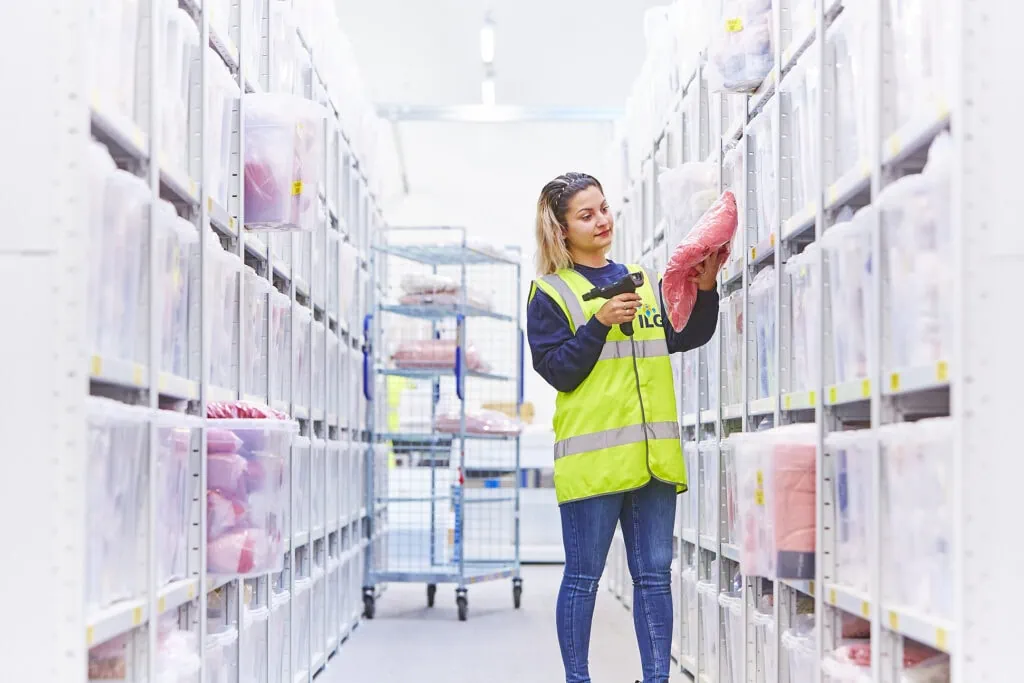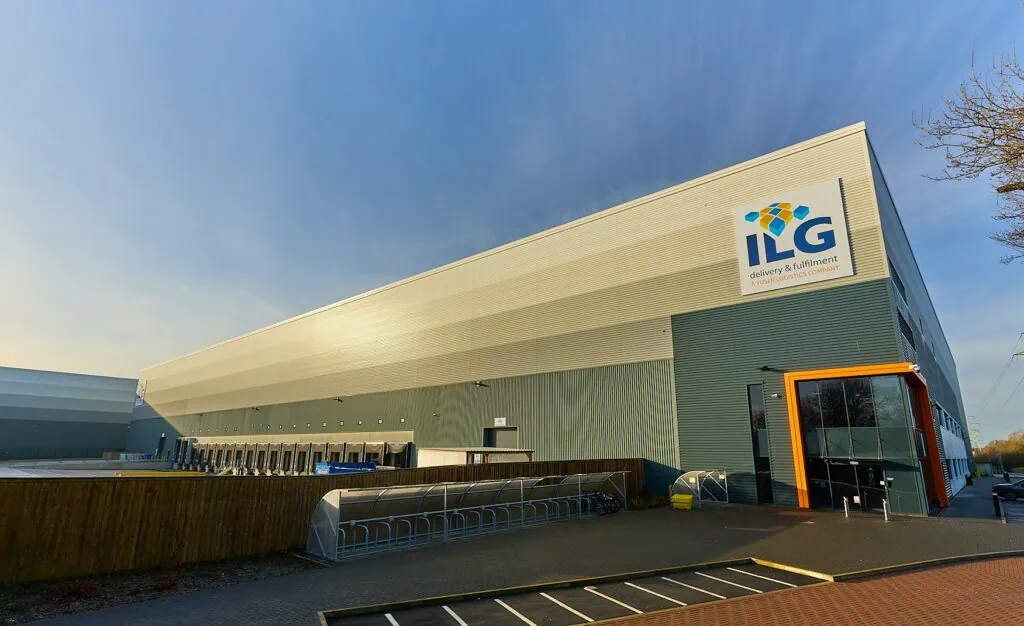
For every brand that relies on a fulfilment partner to get their products into the hands of their customers, working with the right provider is a must. Not only will they simplify the fulfilment process for your business, they will effectively become an extension of your brand.
That extends to your end-customers perception: many people will not realise they are dealing with an outsourced 3PL, so while good end-customer service will reflect well on your brand, any issues associated with their purchased item’s delivery will soon tarnish your reputation.
That’s why we’ve highlighted the five most important steps below for you to address when scoping out a new 3PL partner:
Step 1: Making the decision to switchStep 2: Research and identify requirements
Step 3: Checks and vetting process
Step 4: Selection and making the transition
Step 5: Having a seamless switchover
If you are looking for a new fulfilment partner, see what ILG can bring to your customers to help your business thrive.
Step 1: Making the Decision to Switch
Defining your 3PL’s objectives is an important step in finding a great partner. But negative or lacking aspects of your existing partner will give cause to consider a change of provider.
These could include:
Quality control
QC issues with your existing 3PL can harm your reputation with your end customers and impact repeat business, as well as making it more difficult for you to keep track of stock levels.
Issues commonly caused by poor quality control include:
- Poor cost control
- Low pick accuracy
- Failed or late deliveries
- Inaccurate stock levels
- Poor account management
Having correct and up-to-date stock data from your 3PL is essential to keep on top of your business’s cash flow and planning. Any delays or inconsistencies in reporting missing stock or lost deliveries can make a real difference to your bottom line, so you need to know that you can trust the stock data reported by your 3PL.
Omnichannel fulfilment capability
Omnichannel fulfilment can be a fine art. Making sure exactly the right number of products are delivered to the right channels at the right time can make a huge difference to the successful day-to-day running of your business.
Not all 3PLs can cater for both e-commerce and retail store delivery channels, and so partnering with a provider that can provide both is essential to reach your customers, wherever they are shopping.
Learn more about the benefits of omnichannel fulfilmentPartnership mentality
When you work with a 3PL provider, that business should feel like they are in partnership with you, taking time to understand the values and core principles that matter most to you and your customers.
If you find a fulfilment provider that shares the same mindset as you when it comes to sustainability, communication, and work ethic, then they really will feel like an extension of your business – exactly how it should be. That’s why you should approach any search for a 3PL with a view to it being a long-term partnership.
Ability to scale
The fulfilment partner you chose when your business was still reasonably small may no longer be suitable now that your business has grown. If your requirements have grown faster than their ability to serve them, then you could be stunting your business’s potential growth.
Whether it’s seasonal peaks that cause logistical problems, or an influencer featuring your product that spikes demand, your 3PL should be fully able to cope with shifts in demand as they come.
Technology can also hamper growth; a small-scale fulfilment provider’s WMS might lack features needed as a business grows, such as the ability to track orders. Installing a new WMS can take time, so working with a fulfilment provider that meets your needs and has room to grow as your business scales will ensure a long-lasting relationship.
Specific capabilities
Additional customisation options for your products can be a powerful USP for your brand, but not all 3PLs can fulfil this. Gift-wrapping, engraving, embossing and other forms of personalisation can all enhance your product range and help bring more customers to you, but you may be limited by what your logistics provider can offer.
Delivery times also make a big difference to e-commerce transactions and are largely influenced by what your 3PL can provide and negotiate with the carriers. At a time when almost a quarter of online shoppers abandon a purchase if shipping is not fast enough, can you really afford to lose customers because of the delivery windows you offer?
Step 2: Research and Identify Requirements
When approaching a potential 3PL partner, be sure to detail the following areas; their responses will help build a clearer picture of whether they are the right 3PL provider for you.
- Provide a clear and accurate brief of what you’re looking for
- Brand values and vision – make sure these are aligned with your business
- Order volumes – outline expected off-peak and peak order numbers and when peak times are for your products
- Omnichannel – are they able to cater for all your channels, to retailers and direct to consumer?
- Sustainability – are they committed to reducing emissions and waste, and do their goals and timescales align with your own?
- Customer service – do they have teams of people in place, dedicated to supporting your business?
- Integrations and technology requirements – will your existing technology integrate with the WMS and software used by your new partner? If you’re looking to change technology in the future will they be able to accommodate?
- Location – both in relation to their distribution centres and where your core customers are based
- Industry expertise – have they worked with businesses similar to your own in the past and how have they overcome any hurdles you may have faced previously?
- Accreditations – certain items (including organic products) will need to be fulfilled through accredited suppliers
- Delivery and packaging requirements – do you have any specific needs around how your products are packaged and/or delivered?
- Value-added service requirements – do your products require gift-wrapping, engraving, embossing or other forms of personalisation?
- Business growth strategy – find out how they would accommodate any changes to your business to handle increased volumes of picking, packing and delivery
Step 3: Checks and Vetting Process
Get quotes & proposals
It is always sensible to get tailored quotes from a shortlist of 3PL providers – the ultimate decision should not come down to cost alone, and there are different pricing models available, so one may suit your business better than others.
With the pricing quotes you should also be taking more detailed business partnership proposals from 3PLs – these are a great way to learn more about their business, but also for them to demonstrate that they have spent time researching your brand and that they understand what is important to you.
See our fulfilment pricing pageSite visits
A reputable fulfilment business will be able to accommodate site visits for potential partners, and will help you decide whether they would make a valuable addition to your business having met their core teams in person.
While some providers will be able to give a tour of their fulfilment facilities online, an in-person visit is always recommended so you can meet the team you will be working with and ask them questions face-to-face.
Do your homework
Ensure you gather as much information as possible to make the most informed choice possible.
Read through any case studies featured on their website, and look for industry awards & accreditations. Feel free to ask prospective 3PLs for references from any relevant customers featured on their website.
Social media presence can also be telling. If they post infrequently or don’t share insights about themselves, their industry partners or their clients, does this line-up with how they present themselves elsewhere?
Lastly, take time to read any commercials, SLAs and terms and ensure that they have read through yours, leaving room to negotiate if needed.
Step 4: Selection and Making the Transition
Having selected your preferred fulfilment partner, ensuring the transition is as seamless as possible will reduce the impact on your end customers, and let your new provider hit the ground running.
These are some of the most important areas to coordinate when making the transition from old to new:
Timing
Moving fulfilment partners during your peak trading period will likely result in things going wrong and makes the logistics of switching over much harder for all involved.
Choosing to make the switch during historically slower times of the year will allow more time and resources to go into the smooth transition from one partner company to another. This will also reduce any impact that scheduled downtime may have on your customers.
Communication
Good communication at this time will be essential to maintain relationships with stakeholders throughout this period. Your outgoing 3PL will need to be kept in the loop to allow for comms around what to do with returns, where to send new stock etc. and likewise, your incoming 3PL will need to be briefed on the same so that they can coordinate between themselves.
Manufacturers and suppliers will also need to be kept in the loop at this stage to ensure that they know where to send products and what the cut-off point will be for sending stock to your outgoing provider.
Last but by no means least, keeping your end customers informed of changes will help preempt any disruption to shipping times while the transition takes place.
Integrate technology
Integration with your business’s website or sales platform and existing Warehouse Management System (WMS) is essential. When switching providers, you and your 3PL will want to test all aspects to ensure this is set up and running smoothly, allowing for any disruption if additional time is needed to switch between systems.
Find out more about ILG’s warehouse & fulfilment technologyStep 5: Having a seamless switchover
A good 3PL will have years of experience and will involve meticulous planning to make the switchover seamless for you and your end customers. It is key that lines of communication are kept open, to ensure this point of the journey is just the beginning of a successful and long standing partnership with your new provider.
ILG has many long-standing relationships with global brands, including Trinny London, Charlotte Tilbury and Belstaff. This is possible because we work together closely, taking the time to understand their needs, so that we offer a service that acts as an extension of their business.
If you’re thinking about making the switch from your existing 3PL provider, take a look at our fulfilment services to see if we would make a good fit for your business.
Contact Us
More insights >
How to Manage Your Stock with SKU Numbers: Best Practice Guide
If you’re an e-commerce business, efficient inventory management is essential – and one important part of this is understanding SKU numbers.
ILG is a Finalist for Best Logistics Solution at the BeautyMatter 2025 Awards!
We’re thrilled to announce that for the third year in a row, ILG is a finalist for ‘Best Logistics Solution’ at the BeautyMatter 2025 Awards!

